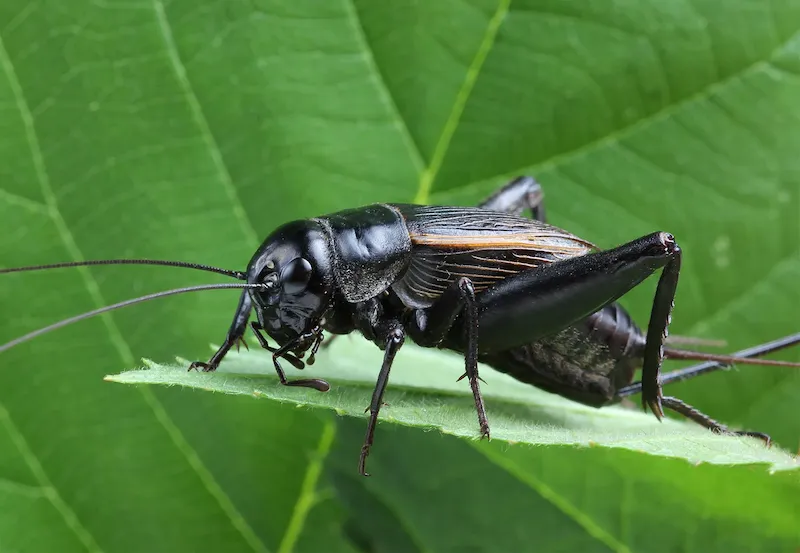We all know the evening sound of a cricket. Did you know that the number of cricket chirps reports the temperature? It’s true! We explain how to use the “cricket thermometer” method. And next time there’s a warm evening, count the cricket chirps!
The Cricket as a Thermometer
Crickets are cold-blooded and take on the temperature of their surroundings. Back in 1897, a scientist named Amos Dolbear published an article “The Cricket as a Thermometer” that noted the correlation between the ambient temperature and the rate at which crickets chirp.
The insects’ muscles contract to produce chirping, based on chemical reactions. The warmer the temperature, the easier the cricket’s muscles activate, so the chirps increase. The cooler the temperature, the slower the reaction rate, and the less frequent the chirps.
Cricket Temperature Formula
The formula expressed in that article became known as Dolbear’s Law. It’s surprisingly simple:
To convert cricket chirps to degrees Fahrenheit: Just count the number of chirps in 14 seconds, then add 40 to get the temperature.
The number you get will be an approximation of the outside temperature.
Example: 30 chirps + 40 = 70° F
To convert cricket chirps to degrees Celsius: Count the number of chirps in 25 seconds, divide by 3, then add 4 to get the temperature.
Example: 48 chirps /(divided by) 3 + 4 = 20° C
How Do Crickets Chirp?
So, how and why do crickets make that chirping sound, anyway?
Chirping is a cricket’s way of communicating. Male crickets use chirping to attract females, scare off other males, or warn of danger.
Contrary to popular belief, crickets do not use their legs to chirp! In fact, crickets produce the iconic sound by rubbing the edges of their wings together. The male cricket rubs a scraper (a sharp ridge on his wing) against a series of wrinkles, or “files”, on the other wing. The tone of the chirping depends upon the distance between the wrinkles.
It’s a little simple to the way you run your thumb against a comb.
There are several reasons why crickets chirp. They may be:
Calling to attract a female with a a loud and monotonous sound
Courting a nearby female with a quick, softer chirp
Behaving aggressively during the encounter of two males
Sounding a danger alert when sensing trouble
Crickets are part of the family Orthoptera (grasshoppers and katydids).
The Cricket Chirp Challenge
Next time you hear a cricket, test out its temperature-telling prowess and let us know how it goes!
Here’s a fun challenge:
Go outside in the evening if you know a place where crickets chirp (or have a pet cricket).
Bring a stopwatch (a mobile phone has one). Pick out the chirping sound of a single cricket.
Just count the number of chirps in 14 seconds, then add 40 to get the temperature. (Perhaps do this a few times, just to see if you’re getting the same number. Take the average.)
Check the temperature on an outdoor thermometer. Is it close?
Try it again on a cooler evening. See how the chirp frequency changes.
Start to notice the chirps of the crickets when you’re outdoors. It’s nature’s thermometer!

The Farmers Almanac June 2022
